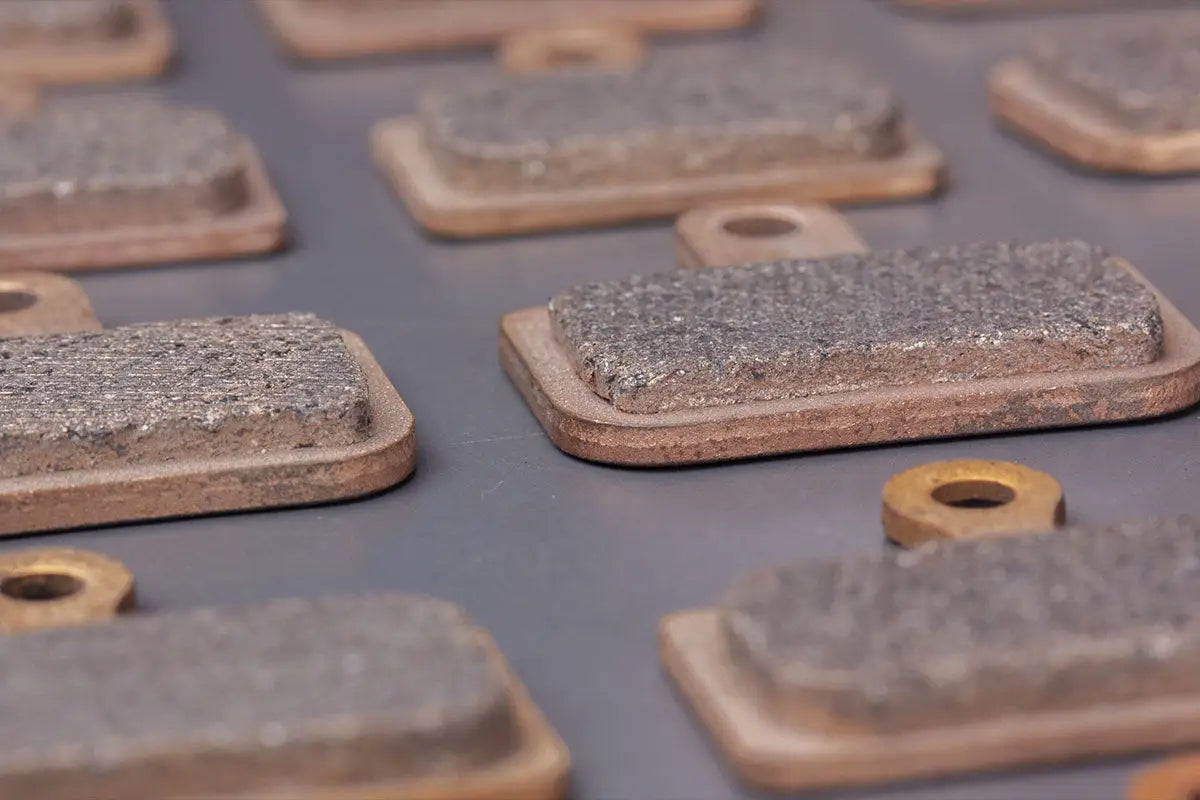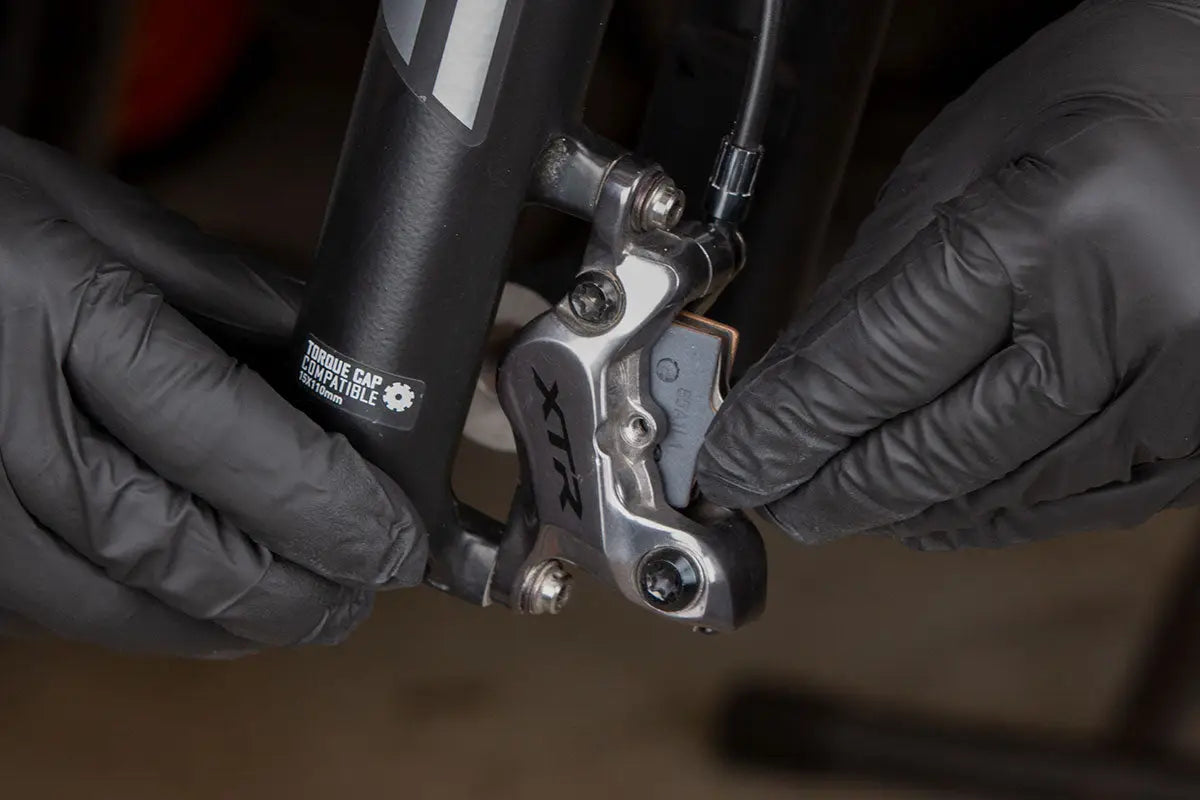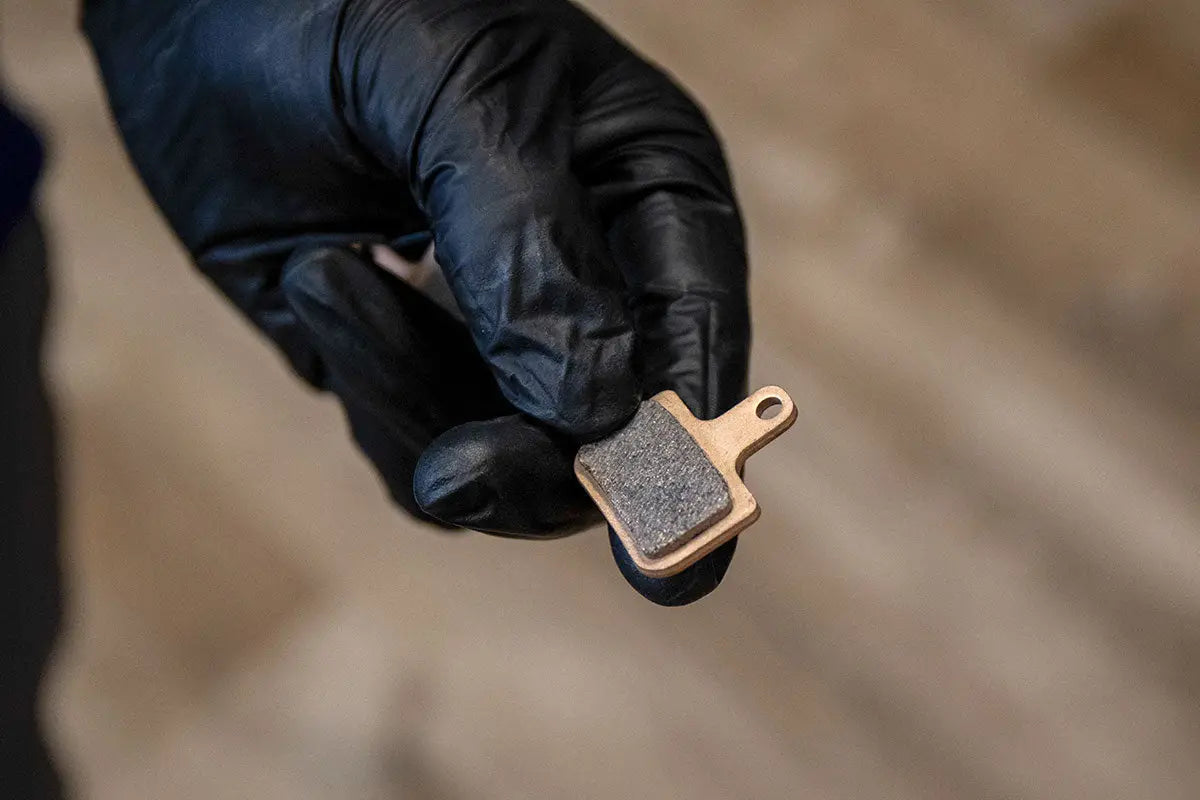Brake pads for bicycles come in two main flavors: sintered and organic. Both have pros and cons, so let’s dive into the nitty gritty to see why Kogel opted for variations of sintered pads for our product line instead of using organic pads, which are popular with many cross country riders.

Brake Pad Compound Recipes
First let’s start off by acknowledging that sintered and organic are umbrella names. Just like one “carbon” frame is very different from the next because of the fibers and resins used and later in the process, the lay-up, curing and finishing. “Sintered” tells you something about the brake pads, but not a lot. The devil is in the details.
The main difference between the two compound families is in the base material used: Sintered has a metallic base, typically nickel or copper. Organic uses a resin base, which means something that started off as crude oil.
Brake pads can have up to 15 ingredients in its composition, which can be metals, kevlar, ceramics, or a range of other products. The exact composition determines the features of the brakes: modulation, initial bite when cold or hot, durability, resistance to heat, noise reduction, you name it. Pad composition mix is the black magic.

Hotter than a Brake Pad Oven
A big difference in the production is the baking temperature, aka where all the different ingredients are heated up and fused together. Organic pads are typically processed at around 500℃, Sintered pads at 1000℃. Metal simply has a higher melting point than resin. More on this later.
So how does this compare to how hot your brakes get on a hard descent?
Organic Pads vs Heat
Organic pads are popular with cyclists because they tend to have a strong initial bite and run a bit quieter than most sintered pads. Resin is a soft material, so it grabs the rotors from the start.
Problems tend to arise when the brakes heat up (which only takes a couple of hard corners). Brake pads and rotors can heat up to 300℃ on long descents, which is not too far off the processing temperature in production.
This amount of heat will be enough for organic pads to soften and glaze. As the temperature increases, brake performance will drop. If the pads are glazed over, performance will not return to normal, even when the brakes cool down.
Sintered Pads vs Heat
Sintered pads require less bedding in and are far more resistant to heat (note the gap between the 300℃ operating temperature and 1000℃ processing temperature). They will need a bit of temperature to get to their best performance, but after that braking is constant and reliable.
Another downside of organic materials is that it gels well with contamination: oily substances picked up from the road or chain cleaning will easily ruin pads. Metallic materials are less likely to mix with oils and therefore are more resistant.

Leaning In On Sintered Pads
For us, sintered pads make more sense, especially in terms of our commitment to Guaranteed Performance. If you have a personal mechanic who swaps out your pads after every race, then perhaps organic compounds may make more sense, but for the majority of cyclist looking to have their best riding experience, sintered just makes more sense.
Since sintered metallic pads are considered the higher quality, more durable and perform better under extreme conditions, we have worked closely with the engineers at our manufacturing plant to design two different compositions. Kratos is focused on durability and modulation. Bia is a softer compound focused on quieter operation and great initial bite, hot or cold.
Whichever version you choose, let us know what you think. Shoot me an email, ard@kogel.cc, or hit us up on socials. We’d love to hear your thoughts.

